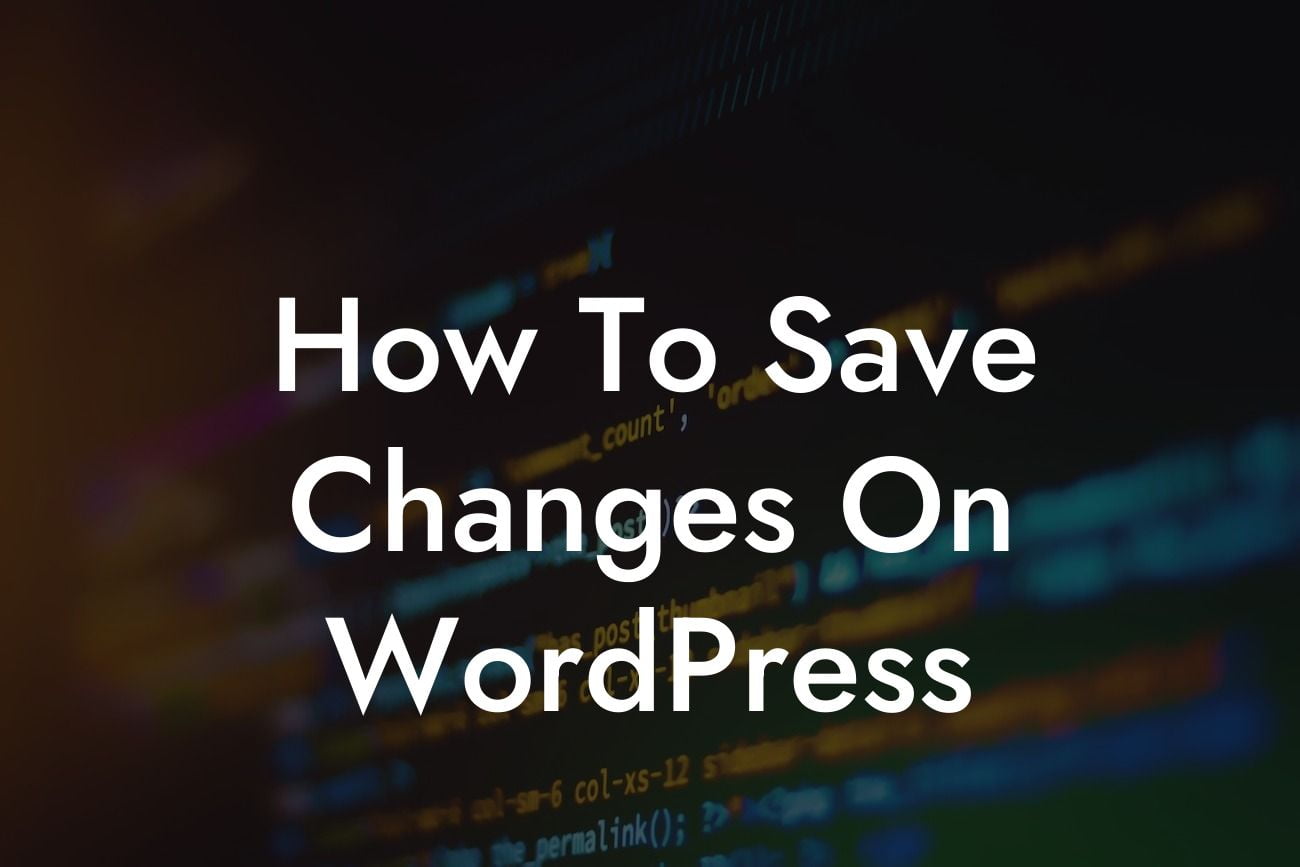When it comes to managing and updating your WordPress website, saving changes is a crucial step to ensure that your content stays up to date and your modifications are properly stored. In this comprehensive guide, we will walk you through the process of saving changes on WordPress, providing you with valuable tips and techniques to optimize your website maintenance routine. Whether you're a small business owner seeking to enhance your online presence or an entrepreneur looking to supercharge your success, these strategies will help you stay organized and efficient in managing your WordPress site.
Saving changes on WordPress might seem like a basic task, but there are several important considerations to keep in mind. Let's dive into the step-by-step process and explore some valuable insights along the way.
1. Understanding the Basics:
Before learning how to save changes, it's essential to understand the different types of content you can modify on WordPress. This includes posts, pages, themes, plugins, and various customization settings. Familiarize yourself with these elements to effectively manage your website.
2. Modifying Content:
Looking For a Custom QuickBook Integration?
To make changes to your WordPress content, log in to your website's admin dashboard and navigate to the appropriate section. Whether you're editing a post, page, or customization settings, ensure that the changes you make reflect your desired outcomes. Use H2 and H3 headings, bullet point lists, and numbered lists to enhance the readability and organization of your content.
3. Preview and Review:
Before saving your changes, take advantage of WordPress's preview feature to see how your modifications will appear on the live site. Double-check for any errors or inconsistencies, ensuring that your content looks professional and aligns with your branding.
4. Saving the Changes:
Once you are satisfied with your modifications, click on the save button to store your changes. It's crucial to remember that saving your changes does not make them immediately visible on your website. You may need to publish or update your content for the changes to take effect.
How To Save Changes On Wordpress Example:
Let's say you run a small business blog and want to update an existing post on "Top 10 Marketing Strategies." After making necessary revisions, such as adding new insights and removing outdated information, use the preview feature to ensure your changes look good. Once satisfied, hit the save button to maintain a backup of your updated content.
Congratulations! You now have a solid understanding of how to save changes on WordPress. Remember, regularly updating and maintaining your website's content is essential for attracting and retaining visitors. Make sure to share this article with fellow small business owners and entrepreneurs, and explore the array of guides available on DamnWoo to further enhance your online presence. Don't forget to check out our awesome WordPress plugins, designed exclusively for small businesses and entrepreneurs, to supercharge your success.
By following these simple yet effective steps, you can confidently save changes on WordPress and take full control of your website's content management. Get ready to elevate your online presence and excel in the digital realm!













